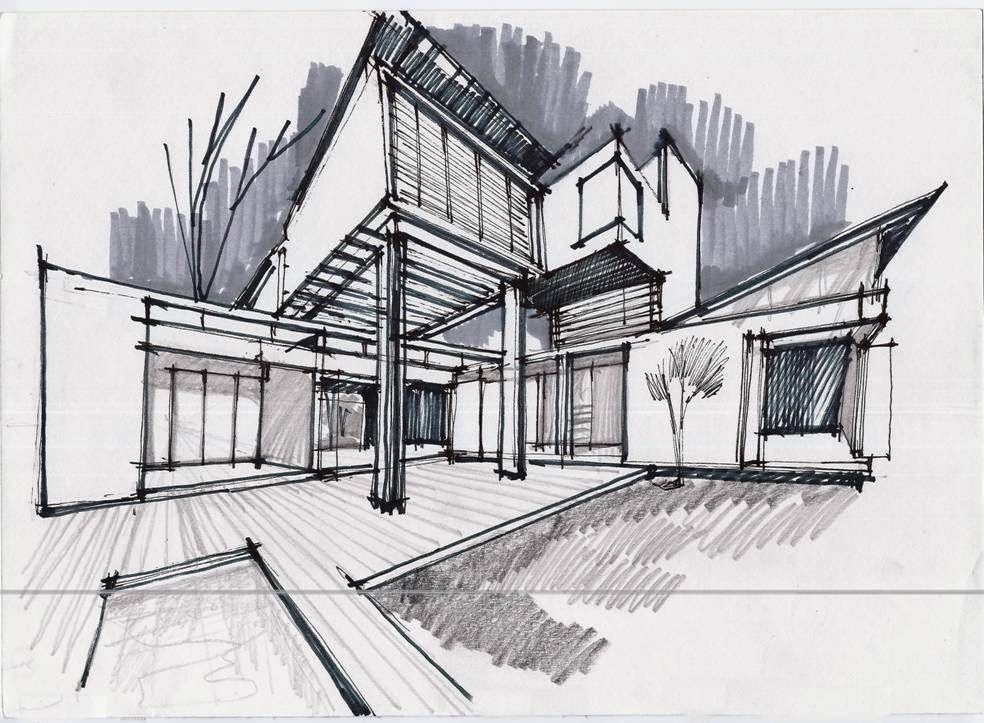THE IMPORTANCE OF SKETCHING TO ARCHITECTS
The act of drawing is an important starting point for the intellectual process we call ‘design’. To be able to draw a chair or a building is a prerequisite for anyone wishing to design such things. Drawing has two functions for the designer – it allows him or her to record and to analyse existing examples, and the sketch provides the medium with which to test the appearance of some imagined object. Before the advent of photography most architects kept a sketchbook in which they recorded the details of buildings, which they could refer to when designing. The fruits of the Grand Tour or more local wanderings consisted of drawn material supported, perhaps, by written information or surveyed dimensions.
Drawings have been used by architects in many different ways. Ranging between the opposite poles of the freehand drawing as a record and as a design tool exist many different applications for the designer. Some architects use the sketch as the main means of communicating a design idea to clients. Such sketches relay the thinking behind a proposal as well as suggesting a tangible form. Other architects use the sketch to analyse townscape and to indicate how their design will fit into the street. Others use the sketch as a method of studying building typology, using the analysis as a way of placing their design into known precedents. However the sketch is employed, the main point is to use the freehand drawing as a design tool, as a method of giving form and expression to one’s thoughts. One may finish the design process with a formal perspective, but that end product should not be where sketching begins. Design analysis through the freehand drawing should be at the start of the creative process, not at the end, and preferably before the design commission arrives in the first place.
Subscribe to:
Post Comments (Atom)
video: renovation
Most viewed
-
It is one of the many attractions & places of interest that the city of Dar es Salaam houses, one of the major tourist attr...
-
These are usually considered in the context of strip foundations and are used mainly on sloping sites to reduce the amount of excavat...
-
Location; CBD Mbeya city Client; Mbeya municipal council Financier ; NSSF Designer; Ivan JOSEPHAT From the designer. Mbey...
-
what is an Eco-house? Eco-architecture sees buildings as part of the larger ecology of the planet and the building as part of a livin...
-
Project: proposed Makutano national trading center. Location: Kisutu-Posta, Dar es salaam. Client: National Housing Corporati...
Copyright (c) 2013 111.












0 comments:
Post a Comment